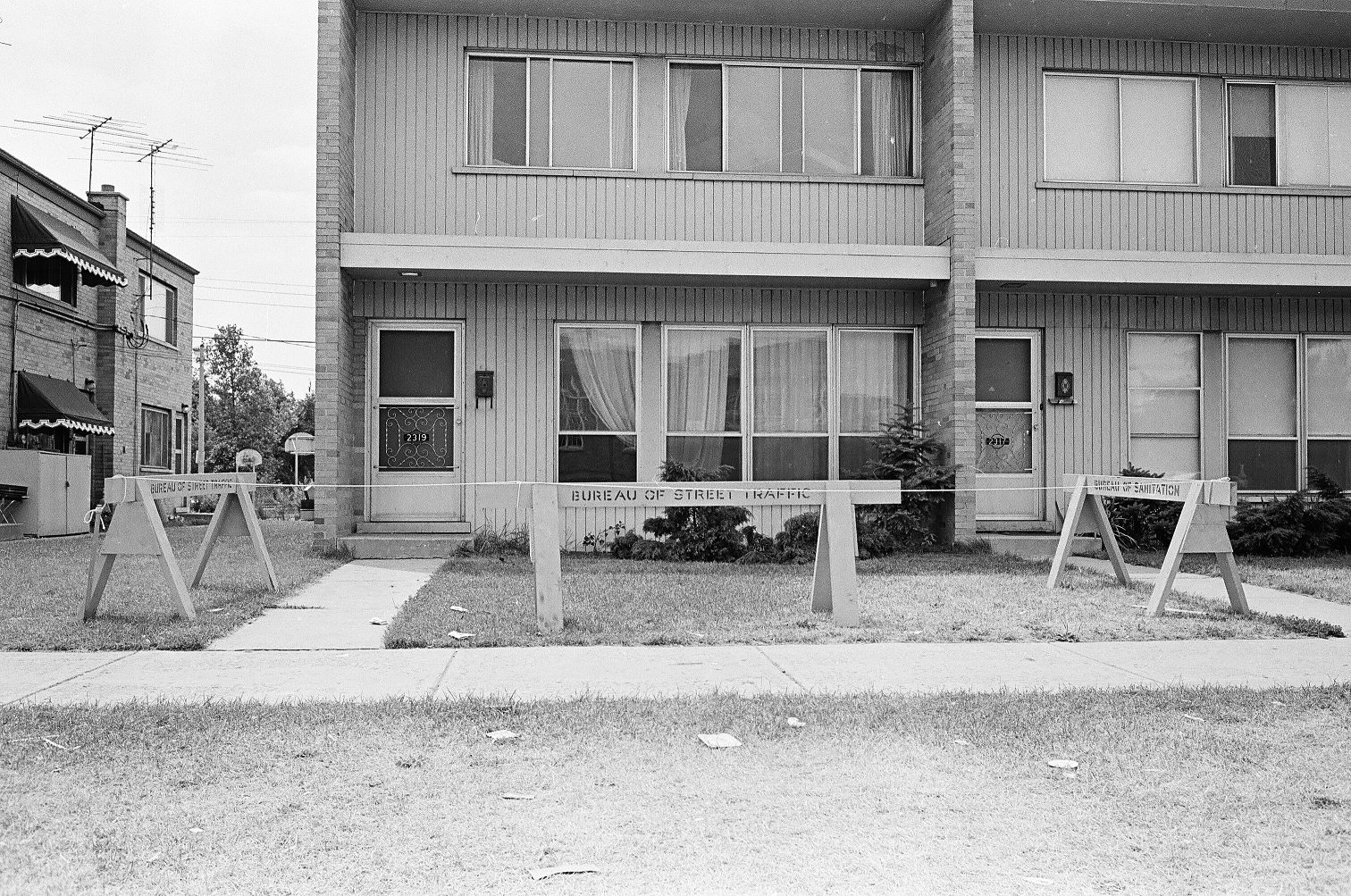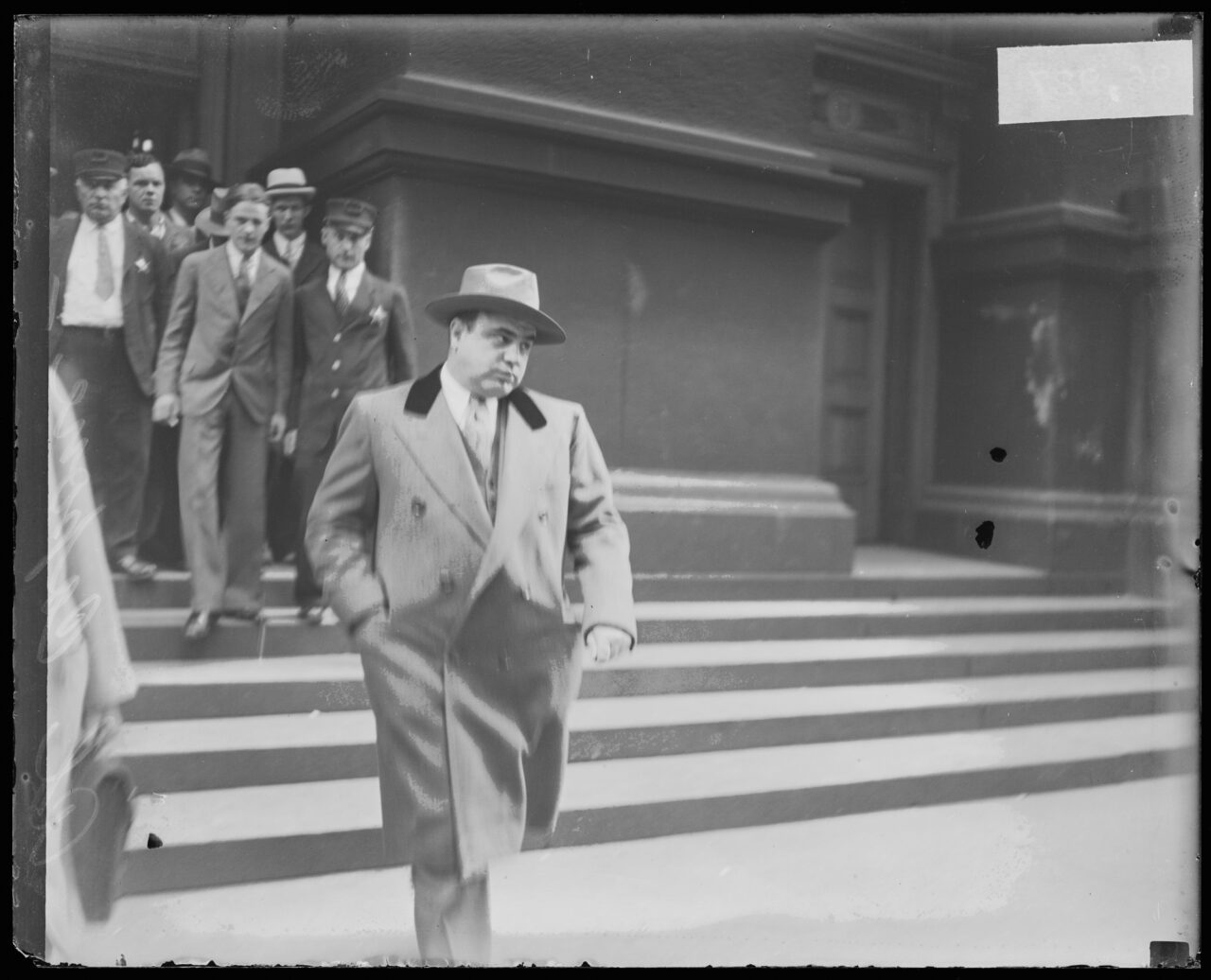To mark 100 years since Beulah Annan was accused of murder in a case that fascinated the city, CHM historian Jojo Galvan takes a closer look at the incident and how it inspired a well-known Broadway musical.
Indulging in true crime tales for leisure, whether binge-watching the newest documentary or the in-ear vibration of familiar voices and sound effects animating our favorite podcast, isn’t a new phenomenon. Time and again, rendition after rendition, some of the darkest stories in our collective history continue to draw in a breadth of diverse audiences. But why?
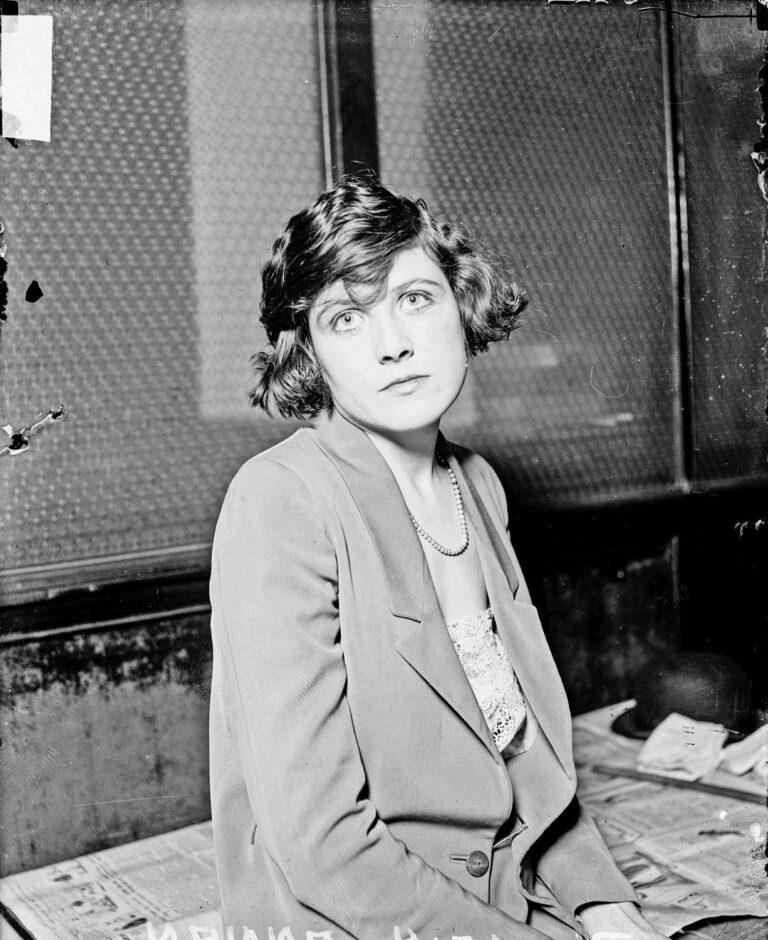
Beulah Annan, accused of killing her lover, Chicago, c. April 1924. DN-0076798, Chicago Daily News collection, CHM
One of these endlessly told stories happened 100 years ago on the South Side of Chicago, in an unassuming apartment complex in the North Kenwood neighborhood, introducing the world to the historical character of Beulah Annan. Born in 1899 in Kentucky, Beulah and her husband, Albert, arrived in Chicago at the start of the 1920s. They both held blue-collar jobs to make a living, with Beulah finding work as a bookkeeper for a local laundry. Shortly after arriving in the city, she began having an affair with a coworker named Harry Kalstedt. On April 3, 1924, Beulah and her lover had a secret rendezvous in her apartment while her husband was at work. According to Beulah’s later testimony, both she and Kalstedt had been drinking wine when a lovers’ quarrel turned deadly, and she shot him in the back with a gun she kept in her home.
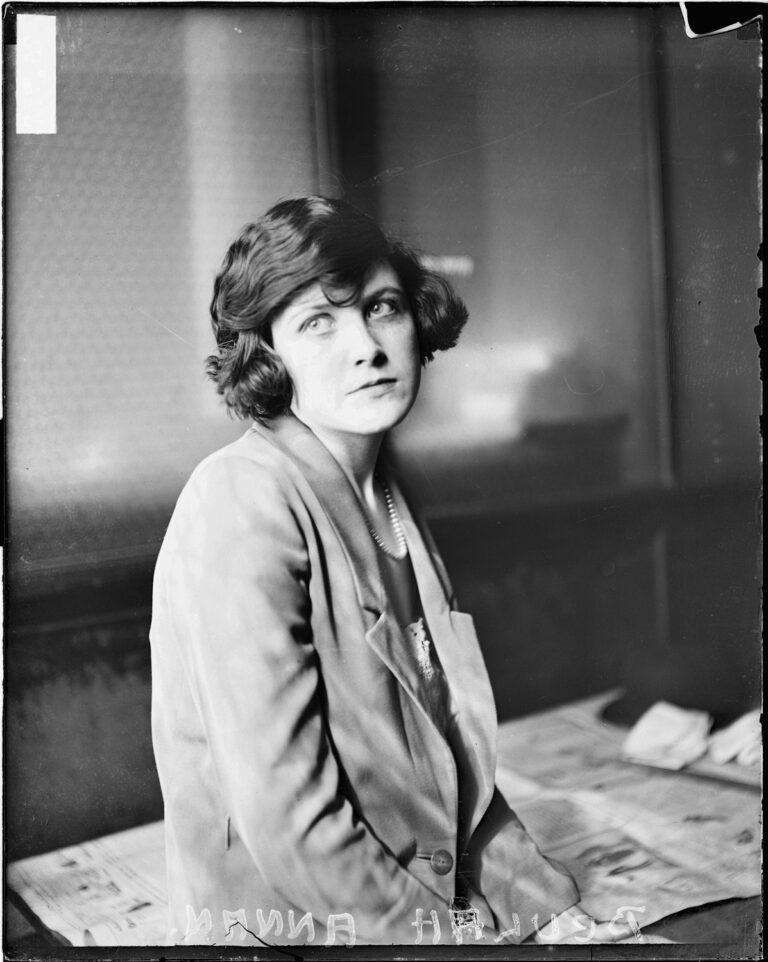
Another portrait of Beulah Annan, c. April 1924, Chicago. DN-0076797, Chicago Daily News collection, CHM
According to various reports, the fatal shot was fired around 2:00 p.m., but authorities weren’t contacted until 5:00 p.m. when Albert got home. By the next day, a media frenzy, the 1920s equivalent of going viral, ensued. The initial fascination came not from the potential murder case, but with Beulah herself. Several outlets, including the Chicago Daily News and the Chicago Tribune, all ran headlines that focused on Beulah’s attractiveness first and the fact that she potentially committed a murder second. With a trendy bob haircut and piercing eyes, Beulah only added to the fanfare behind the case when she revealed that instead of calling the authorities, she danced to her Hula Lou record for hours as Kalstedt agonized and eventually died.
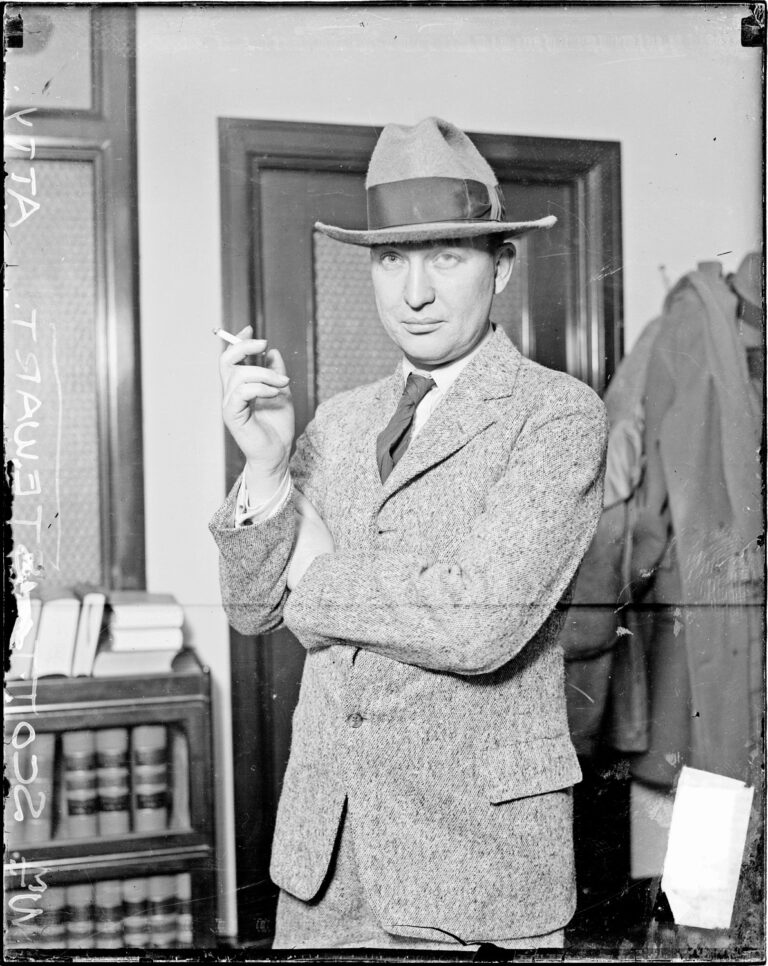
Attorney William Scott Stewart, Chicago, 1926. DN-0081521, Chicago Sun-Times/Chicago Daily News collection, CHM
The trial was just as much a spectacle as the initial reports. Albert gathered enough money to hire well-known Chicago attorney William Scott Steward, who had achieved a level of local notoriety as the legal representative for the mob. Throughout the entirety of the investigation and trial, from the statement given to the police to her cross-examination on the stand, Beulah changed her narrative no less than three times, initially admitting to the crime and later walking back her admission, claiming she feared for her safety during the argument with Kalstedt. Beulah’s husband and relatives of Kalstedt also took the stand. On May 25, 1925, a jury acquitted Beulah of her charges, and 24 hours later she announced to the media that she had separated from Albert. Their divorce was finalized in 1926. She would go on to marry two more times before succumbing to tuberculosis in 1928.
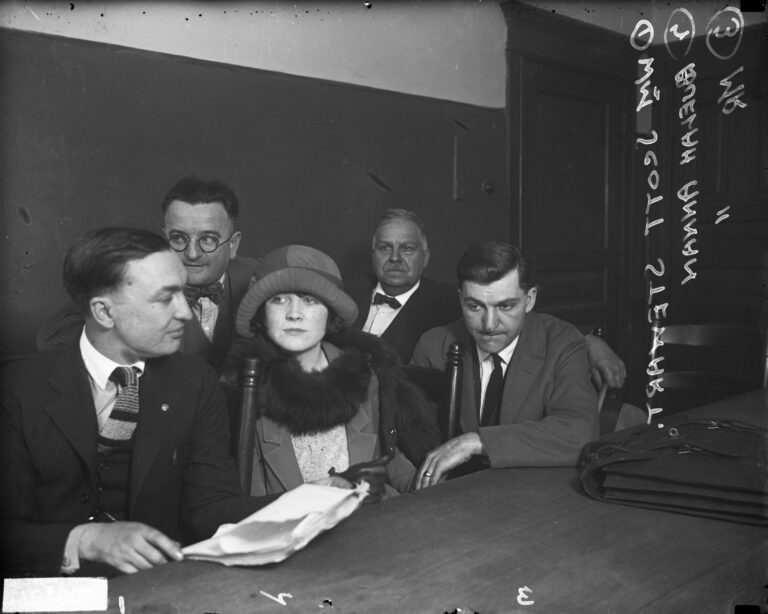
Beulah Annan and her husband, Al (right), sitting with her attorney, William Scott Stewart (left) and two unidentified men, Chicago, c. April 1924. DN-0076803, Chicago Daily News collection, CHM
While Beulah’s tale might be new to some, many are familiar with the story she inspired of scandalous love affairs and murder set in Jazz-age America. Chicago, penned initially as a play in 1926 by Maurine Dallas Watkins, the Chicago Tribune reporter on the beat for Beulah’s case, features a character named Roxie Hart, directly inspired by Beulah’s story. Chicago has been revived countless times in the theater world, including as a Broadway musical in 1975 and once more for Broadway in 1996. The 1996 revival made it one of the winningest productions in history, claiming six Tony Awards, including the award for Best Musical. In 2002, we saw Beulah’s tale again, as well as the continued success of Chicago, this time as a film directed by Rob Marshall, which won six Academy Awards, including the coveted Best Picture Award.
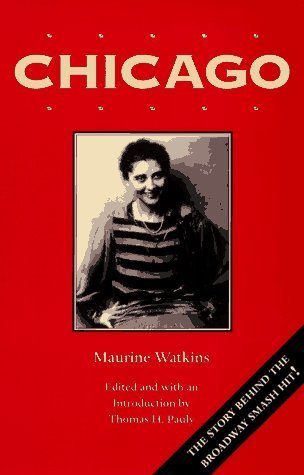
Front cover of the play Chicago by Maurine Dallas Watkins.
So, why do true crime stories continue to captivate us? The answer may be simple–they’re often fascinating in a way few other things are. Truth, as they say, is often stranger than fiction, and stories like Beulah Annan’s and countless others allow us to peek into how someone can cross the lines into committing one of the biggest taboos in the human experience, all from the safety of our homes or on the commute to work.
Additional Resources
- For more on using CHM’s collections to research other famous crimes, see our blog post “The Dark Side of the Windy City”
- Roxie Hart’s counterpart in Chicago, Velma Kelly, was also inspired by a real-life Chicago woman, Belva Gaertner. View digitized images of Gaertner at CHM Images.
- Read “Jailhouse Makeovers,” an excerpt from Douglas Perry’s The Girls of Murder City: Fame, Lust, and the Beautiful Killers Who Inspired Chicago
